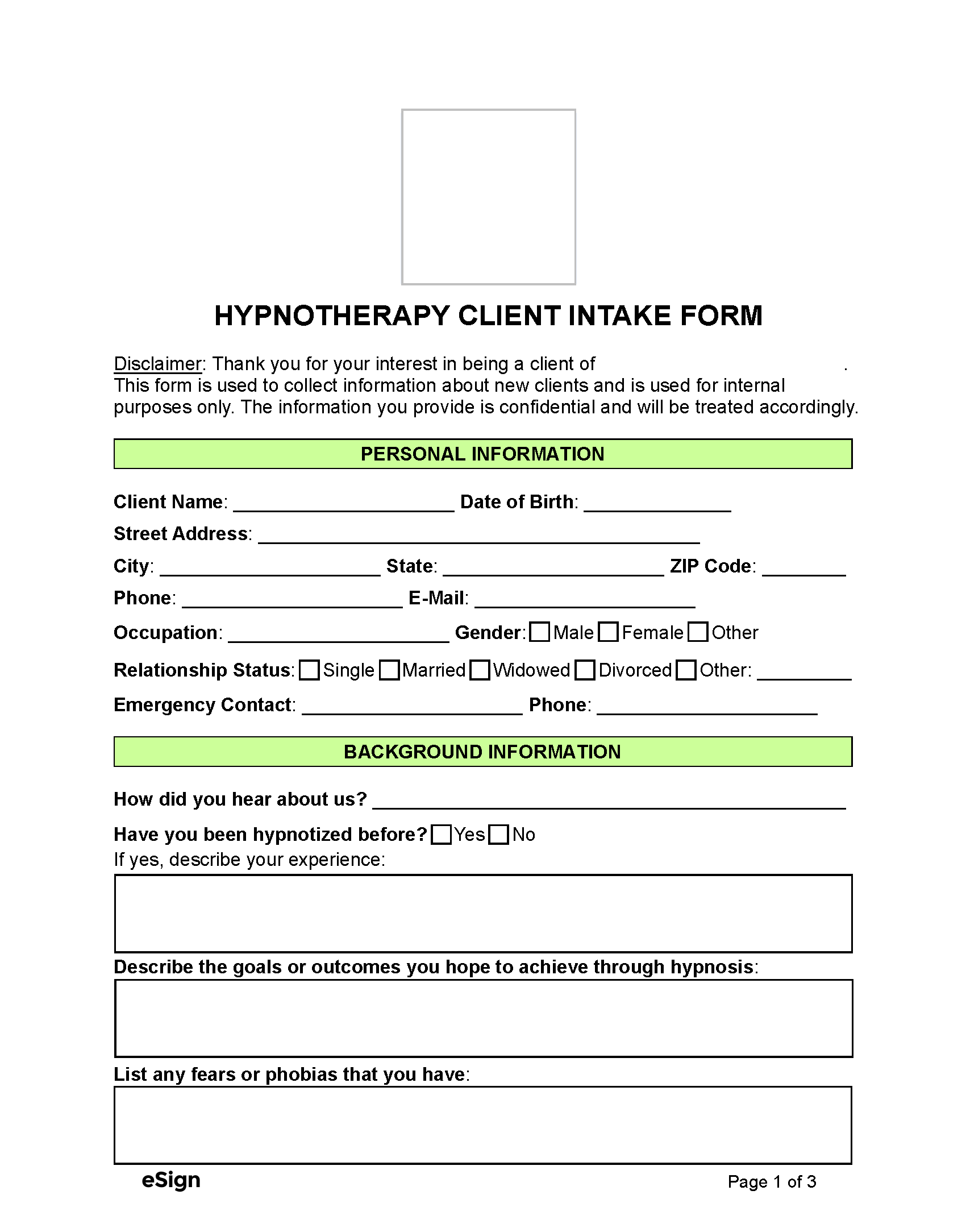Licensing Requirements
Hypnotherapy is a generally unregulated profession in the majority of states. However, a license may be required if hypnosis is used in the treatment of:
- Mental illnesses
- Substance abuse
- Panic attacks
- Post-traumatic stress disorder (PTSD)
- Insomnia
- Phobias
Before treating clients with hypnosis, individuals are advised to contact their local licensing department to determine whether certification or licensure is required.
Hypnotherapy Intake Process
Below is an overview of the intake process for hypnotherapy clients.
1. Initial Contact
After an individual expresses interest in hypnotherapy or is referred to a hypnotherapist by a physician, they should immediately receive an electronic or paper intake form requesting that they complete and return it before the first scheduled session.
2. Intake Form
Clients are typically asked to provide the following information:
- Contact Details – The client’s address, phone number, and e-mail.
- Prior Hypnosis Treatments – Disclosing past hypnosis experiences helps avoid duplicating unsuccessful techniques or discussing topics that have already been explored.
- Goals – Understanding what the client hopes to accomplish through hypnosis enables the hypnotherapist to address those goals directly and gauge progress.
- Social Habits – Knowing the client’s habits can provide valuable insight into their lifestyle and possible influences on their well-being and objectives.
- Medical History – The hypnotherapist should be aware of the client’s current medications and health conditions to avoid any potential risks.
- Life Issues – Problems relating to family, relationships, work, and other life issues should be reported so that the hypnotherapist can offer relevant treatment strategies.
Hypnotherapists will review the intake form before the initial session to familiarize themselves with the client.
3. First Session
During the first session, the hypnotherapist should have the intake form handy in case they need the client to clarify their goals, expectations, concerns, or other information initially relayed in the form.
4. Personalized Treatment Plan
Using the information obtained during the intake process and the first session, the hypnotherapist can create a personalized treatment plan. This includes the goals, techniques, and overall strategy for the upcoming sessions.

